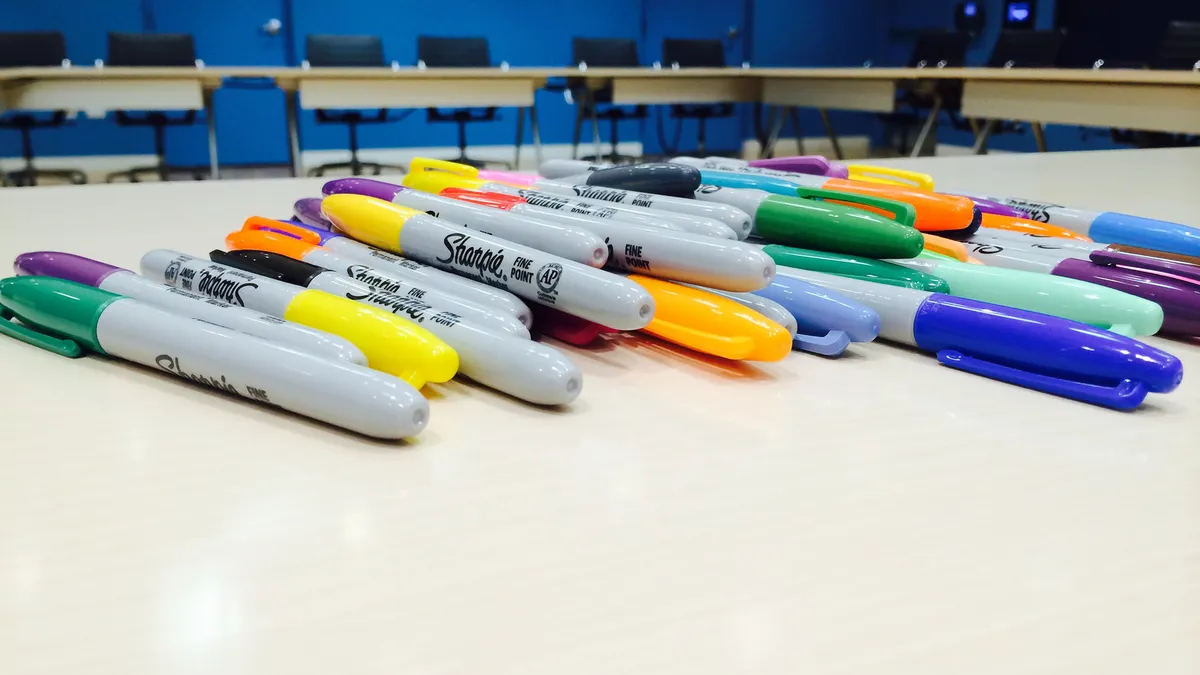The arts are not to be underestimated. While budget cuts and the emphasis on high-stakes testing have meant sacrifices to classes like music, visual arts, dance, and drama for many schools, that doesn't mean these subjects should be forgotten. Various free online tools and resources, like the seven below, are available to help schools integrate the arts into other subjects.
1. ArtsEdge
An offshoot of the Kennedy Center, ArtsEdge is a free digital resource to help students learn "in, through and about the arts." Educators can browse a plethora of lesson plans that help integrate art into more standard subjects like Language Arts, Math, Science, and Social Studies. For example, the K-4 "Adjective Monster" lesson helps students make connections between language arts and visual arts, teaching new descriptive adjectives before having students make paper mache "monsters" embodying their new vocabulary. Older grades may enjoy the "Dalí & Desnos" lesson, which pushes creative writing skills through lessons on surrealism. In addition to lesson plans and filters to help teachers find the best plans, the site offers "How To" guides for integrating art into the classroom.
2. MoMA Learning
Created by New York's Museum of Modern Art, MoMA Learning offers students and teachers tips, resources, and activities for engaging with modern art. The site can be browsed by "theme" or "artist" and features several tools for each category. For example, under theme one can explore the Dada movement, a period from 1916 to 1924 that grew out of the brutality and disillusionment of World War I. MoMA Learn offers a premade PowerPoint, class notes, and activities. For example, the Dada section suggests students research Dada cities — Zurich, Berlin, Hannover, Cologne, Paris, and New York — and then write a 500-word essay on why a chosen city became a hub of Dada activities. As you might imagine, this impeccably organized site is a great resource for social studies teachers who want to add more of the arts and culture into lessons.
3. Smarthistory
From the folks behind Khan Academy, Smarthistory is a multimedia open educational resource focused on art history. The site covers a variety of artistic periods, styles, themes, and artists via videos and essays. Want to infuse some art into your history classes? This is a great resource and WAY cheaper than an art history textbook. Don't know where to begin? The site has a few links to get you started, beginning with "The Basics" — a slew of introductory, almost Wikipedia-like pages. Start with "A Beginner's Guide to the History of Western Culture," "Art As Concept," or the glossary before delving into the more specific lessons.
4. Art21
From PBS, Art 21 provides in-depth video interviews with some of today's most world-renowned artists. While users can browse by artist, the video option also allows a deeper look into certain art themes. For example, the episode entitled "Change" looks specifically at artists who "act as agents of change" and create works in response to a world in flux. While each episode is one hour — a bit longer than a class may have time for — teachers can show clips of artists featured within a show. Just like the recommendation that, once a week, educators use the last 20 minutes of a day to share an NPR Tiny Desk Concert and expose students to new forms of music, perhaps it would be fun to mix it up and share an Art21 video instead.
5. Open Studio
Created by the Getty Artists Program, Open Studio aims to make contemporary art accessible for K-12 classrooms. The site features 11 artists and their ideas on art projects for classrooms. Teachers can filter options, like activity level or medium, to find projects that will resonate with their classroom. For example, a project called "Arranging Your Narrative," created by artist Kara Walker, presents two ideas for how students can display their personal stories, including text messaging their "life story" to a friend. Another lesson by artist James Kerry Marshall called "PLAN and ELEVATION" pushes students to consider their perception of scale. All of the activities come with a downloadable PDF, complete with the artist's bio.
6. Google Art Project
Created by the Google Cultural Institute, the Google Art Project is the result of partnerships with hundreds of museums, cultural institutions, and archives from around the globe. The end result is an online trove of some of the world's greatest artist gems. Users can search the database by collection, artist, or artwork, as well as browse user galleries. Want students to know what a table from the 1620s looked like? Instead of explaining the intricate wood work, why not show them? The Centraal Museum Utrecht has a beautiful draw leaf table, and now Google allows you to zoom in and really examine it. Basically, this is like Google Images, but with art and artifacts.
7. Picturing America
A project initiated by the National Endowment for the Humanities and the American Library Association, Picturing America aims to be a resource for teachers hoping to bring U.S. History to life. The site uses paintings and masterpieces from various eras to help tell the nation's story. In addition to access to monumental images, the site provides lesson plans that match the iconic images. For example, there is a lesson entitled "Benjamin Franklin's Many Hats," which goes along with a famous statue of the innovator. As educators share the image of the statue, they are encouraged to also utilize the guiding questions, learning objectives, preparation instructions, and very specific lesson activities that come with any discussion of the colonial leader.
Would you like to see more education news like this in your inbox on a daily basis? Subscribe to our Education Dive email newsletter! You may also want to read Education Dive's look at 5 K-12 grant opportunities.














